Discover the fascinating flags of Asia! From Japan's rising sun to Malaysia's crescent moon, test your knowledge of 48+ Asian country flags across this diverse continent.
| Flag | Country | Flag history (≤150 words) |
|---|---|---|
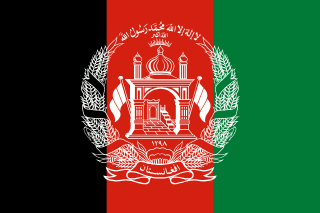 | Afghanistan | Afghanistan’s flags have shifted repeatedly with regime changes. The internationally recognized 2013–2021 tricolour—black, red, green with the state emblem—encapsulated sovereignty, Islam, and 1919 independence. Earlier monarchic, republican, communist, and mujahideen governments each altered layouts or emblems; the Taliban (1996–2001; since 2021) use a white flag with the black shahada. Laws in each period set ratios, colours, emblem art, protocol, half‑masting, and dignified retirement. Read more |
 | Armenia | Armenia’s tricolour—red, blue, orange (apricot)—was restored on 24 August 1990, reviving the First Republic’s 1918 design. Red signifies survival and sacrifice; blue the sky; orange industriousness and talent. Under Soviet rule a red flag with communist symbols prevailed (1922–1991). Law defines a 1:2 ratio, shades, protocol, half‑masting, and dignified retirement; misuse is penalised. Read more |
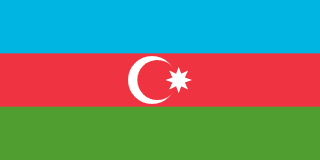 | Azerbaijan | Azerbaijan’s flag (re‑adopted 5 February 1991) is a horizontal tricolour—blue, red, green—with a white crescent and eight‑pointed star centred. Blue denotes Turkic heritage; red progress and modernity; green Islam. First raised by the 1918–1920 Democratic Republic, it was replaced under Soviet rule, then restored before independence. Law fixes a 1:2 ratio, geometry, protocol, and penalties for desecration. Read more |
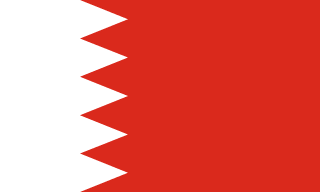 | Bahrain | Bahrain’s flag—white hoist band serrated into five points against a red field—took shape in 1932 and was standardised on 14 February 2002 (five points for the Five Pillars). Red is the traditional Gulf colour; white denotes peace. Statute sets a 3:5 ratio, serration geometry, protocol, and penalties for disrespect; display is mandatory on state occasions. Read more |
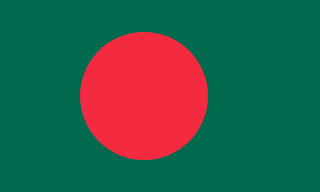 | Bangladesh | Bangladesh’s flag (adopted 17 January 1972) is a dark‑green field with a red disc slightly offset toward the hoist. Green signifies the land’s fertility, youth, and hope; the red disc the rising sun and the blood of martyrs in the Liberation War. The original 1971 resistance flag included a yellow map inside the disc; this was removed for reproducibility and clarity. Proportions are 3:5 with strict placement and diameter rules. Protocol covers precedence, half‑masting, and dignified retirement, and the flag is central to observances on Independence Day (26 March) and Victory Day (16 December). Read more |
 | Bhutan | Bhutan’s flag (standardised 1969) is diagonally divided yellow–orange with a white dragon (Druk) along the divide. Yellow represents the Wangchuck monarchy; orange the Drukpa Kagyu Buddhist tradition; the white dragon purity, grasping jewels for prosperity and protection. The 2008 Constitution and flag rules prescribe a 2:3 ratio, artwork, respectful display, and retirement. Read more |
 | Brunei | Brunei’s yellow flag with diagonal black and white stripes and a red state crest was formalised in 1959 and retained at independence in 1984. Yellow denotes royalty; black and white the principal ministers; the crest (crescent, hands, parasol, banner) expresses Islam, benevolence, and monarchy. Protocol and statute regulate ratio, artwork, respectful display, and retirement. Read more |
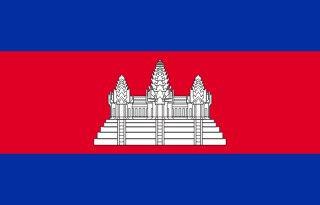 | Cambodia | Cambodia’s flag—blue, red (double width), blue with a white Angkor Wat—was readopted in 1993 with the restoration of the monarchy. First used in 1948, it was replaced by republican and revolutionary flags (1970–1993). Blue denotes royalty, red the nation and bravery, white the temple and unity. Law fixes 2:3 ratio, temple artwork, protocol, and penalties. Read more |
 | China | China’s Five‑star Red Flag (adopted 1 October 1949) shows a large gold star with four smaller stars on a red field. Red symbolises revolution and the people; the large star the Communist Party; the four smaller stars the unity of social groups under Party leadership. A 1949 design contest selected Zeng Liansong’s concept; laws fix a 2:3 ratio, precise star sizes/placement, colour standards, and protocol for display and half‑masting. It replaced imperial and Republican banners at the founding of the PRC. Read more |
 | Georgia | Georgia’s flag—the ‘Five‑Cross Flag’—is a white field bearing a large red cross of St George with four smaller red crosses in the quarters. Restored by law in January 2004 after the Rose Revolution, it revived a medieval Georgian emblem used by dynasties and in church art. The design replaced the 1990–2004 tricolour. Statutes define proportions, cross geometry, and protocols for state, military, and diplomatic display; improper use is restricted. The flag now appears across institutions and international fora. Read more |
 | India | India’s Tiranga—saffron, white (with navy‑blue 24‑spoke Ashoka Chakra), and green—was adopted on 22 July 1947. Saffron signifies courage and selfless service; white truth and peace; green faith and prosperity; the Chakra represents law, motion, and continuous progress. Ratios are 2:3 with strict standards for the Chakra and colours. The design evolved from Congress banners and Pingali Venkayya’s proposals; the charkha was replaced by the Ashoka Chakra at independence. Protocol and the Flag Code govern precedence, half‑masting, and dignified retirement. Read more |
 | Indonesia | Indonesia’s “Sang Saka Merah Putih” is a horizontal bicolour—red over white—first raised nationally on 17 August 1945 and rooted in Majapahit heraldry. Red denotes courage and the physical aspect of humanity; white purity and the spiritual. The 1945 Constitution fixes a 2:3 ratio. Law prescribes protocol (half‑masting in mourning, precedence, dignified retirement). Similarities to Monaco and Poland are coincidental; Indonesia’s design has distinct proportions and history. Read more |
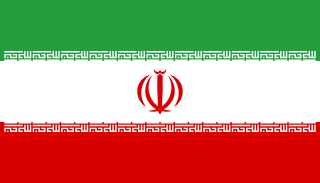 | Iran | Iran’s tricolour—green, white, red—was redesigned on 29 July 1980 after the Islamic Revolution. A stylised emblem representing “Allah” sits centred; the takbir (Allahu Akbar) repeats 22 times along the inner edges of the green and red bands, marking 22 Bahman. Green denotes Islam, white peace, red courage and sacrifice. Ratio is 4:7 with strict legal specs for geometry, shades, and inscription. Desecration or misuse is prosecutable; protocol covers precedence, half‑masting, and dignified retirement. Read more |
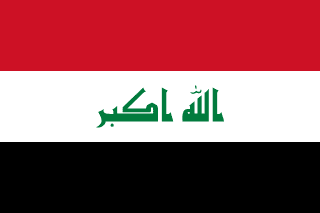 | Iraq | Iraq’s flag—horizontal red, white, black bands with the green Takbir (Allahu Akbar) in Kufic script—was standardised on 22 January 2008. It descends from the Pan‑Arab tricolour used since 1963, which once bore three green stars. Colours signify Arab unity (red/white/black) and Islam (green). Ratio 2:3; law governs respectful display, half‑masting, precedence, and penalties for desecration. Read more |
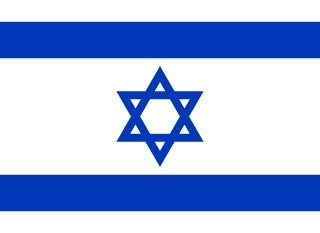 | Israel | Israel’s flag (adopted 28 October 1948) is a white field with two horizontal blue stripes near the edges and a central blue Star of David. The design echoes the tallit (prayer shawl) and long‑standing Jewish communal symbols. Statute sets proportions (commonly 8:11), stripe widths, and precise Magen David geometry. Protocol regulates public display, half‑masting, and penalties for desecration under the Flag and Emblem Law (1949). Read more |
 | Japan | Japan’s flag, the Hinomaru, is a white field with a crimson disc symbolising the sun—reflecting Japan’s identity as the “Land of the Rising Sun.” First mandated for ships in 1854 and standardised during the Meiji era, it was legally affirmed as the national flag in 1999. The circle connotes sincerity, brightness, and warmth; the white stands for purity and honesty. Proportions are 2:3 with the disc diameter at three‑fifths the flag height. Etiquette requires respectful handling, half‑masting in mourning, and prominence on national days. Despite post‑war debates, the design endures for its deep mytho‑historical roots and continuity of state identity. Read more |
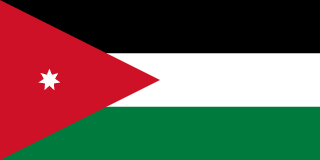 | Jordan | Jordan’s flag (standardised April 1928) derives from the 1916 Arab Revolt banner: black, white, green horizontal stripes with a red chevron bearing a white seven‑pointed star. Colours recall Abbasid, Umayyad, and Fatimid dynasties; the chevron and star signify Hashemite leadership and faith. Statute fixes ratio, star geometry, protocol, and half‑masting. Read more |
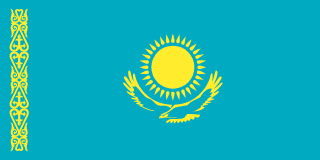 | Kazakhstan | Kazakhstan’s flag (4 June 1992) is sky blue with a gold sun of 32 rays above a soaring steppe eagle, and a hoist‑side national ornament in gold. Blue denotes Turkic heritage and the open sky; the sun life and abundance; the eagle freedom and statehood; the koshkar‑muiz border Kazakh artistry. Law standardises ratio, geometry, shades, and protocol. Read more |
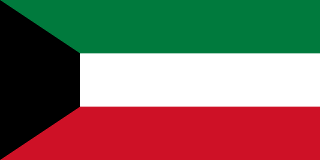 | Kuwait | Kuwait’s flag (7 September 1961) bears the Pan‑Arab colours: green, white, red stripes with a black hoist trapezoid. It replaced the plain red ensign used under British protection. Green signifies land and fertility; white peace; red courage; black the defeat of foes. Law fixes a 1:2 ratio, trapezoid geometry, protocol, and penalties for desecration. Read more |
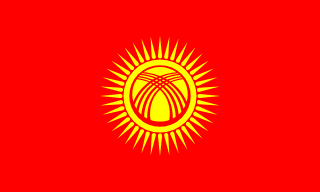 | Kyrgyzstan | Kyrgyzstan’s flag (3 March 1992) is a red field with a yellow sun bearing forty rays (the forty tribes) and, within it, a red tunduk—the crown of a yurt—rendered as three crossed bands. Red signifies bravery and Manas’ banner; the sun life and openness; the tunduk home and unity. Law fixes a 1:2 ratio, ray geometry, tunduk construction, colour specs, protocol, and dignified retirement. Read more |
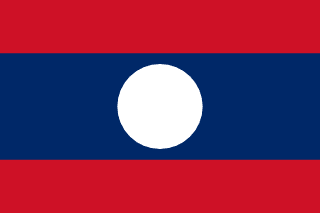 | Laos | Laos’s flag (2 December 1975) is a horizontal triband—red, blue (double‑height), red—with a white disc centred. Red signifies the people’s blood and struggle; blue the Mekong, prosperity, and the nation; the white disc the moon over the Mekong and the unity of the Lao people. Ratio 2:3; statutes specify disc diameter and placement, colours, protocol, half‑masting, and retirement. Read more |
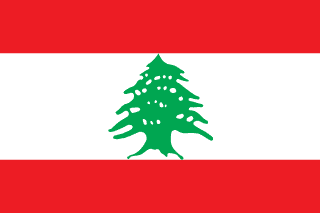 | Lebanon | Lebanon’s flag (7 December 1943) is red‑white‑red with a green cedar centred, touching the red bands. Red signifies sacrifice; white snow and peace; the cedar endurance and holiness. Law fixes a 2:3 ratio, mandates that the cedar touch the red fields, and codifies artwork, shades, protocol, and dignified retirement. The banner dates to independence from the French Mandate. Read more |
 | Malaysia | Malaysia’s “Jalur Gemilang” (Stripes of Glory) features fourteen alternating red and white stripes and a blue canton with a yellow crescent and fourteen‑point star. Introduced for the Federation of Malaya and updated in 1963 for Malaysia, the stripes and points represent the thirteen states plus the federal government. Ratio 1:2; rules govern respectful display, precedence, half‑masting, illumination, and retirement. Read more |
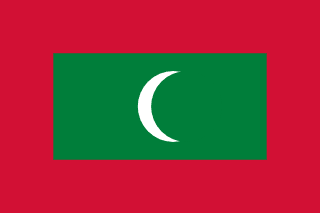 | Maldives | Maldives’ flag is a red field bearing a green rectangle charged with a white crescent opening toward the fly. The modern composition was consolidated during twentieth‑century reforms and affirmed at independence in 1965 and the 1968 republic. Red symbolises the blood and courage of defenders; green faith, peace, and the coconut palm; the crescent Islam. Ratio is 2:3 with codified panel margins, crescent radii, and colour standards. Protocol governs precedence, half‑masting, maritime use, and dignified retirement; royal and state variants used historically have been retired. Read more |
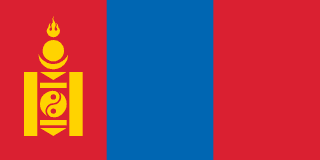 | Mongolia | Mongolia’s flag is a vertical tricolour of red, blue, red, with the golden Soyombo emblem at the hoist. The current form was affirmed in 1992 when the socialist star above the Soyombo was removed. Blue signifies the eternal sky; red strength and progress. The Soyombo encodes fire, sun, moon, earth, water, and the yin‑yang‑like taijitu. Statutes set a 1:2 ratio, precise Soyombo artwork, placement, colour standards, and protocol for display, half‑masting, and dignified retirement. Read more |
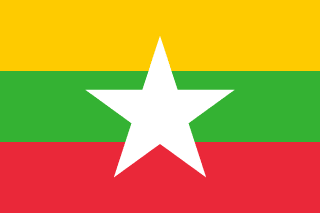 | Myanmar | Myanmar’s flag (21 October 2010) is a horizontal tricolour—yellow, green, red—with a large white five‑pointed star centred. Yellow stands for solidarity; green peace and plenty; red courage and determination; the star the union. It replaced the 1974 socialist flag. Laws set a 2:3 ratio, star geometry, colour specs, and protocol for display, half‑masting, and dignified retirement. Earlier colonial and independence‑era flags used different emblems. Read more |
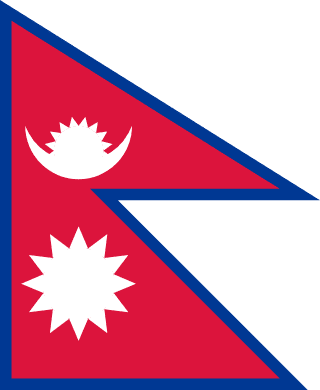 | Nepal | Nepal’s flag is the world’s only non‑rectangular national flag: two stacked crimson pennants bordered blue, bearing a white crescent moon above and a white twelve‑pointed sun below. Adopted with the 1962 constitution, it modernised 19th‑century royal standards by removing facial features. Crimson denotes bravery and the national flower; blue peace. Exact geometric construction is codified in law. Read more |
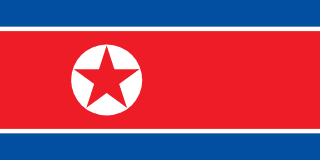 | North Korea | North Korea’s flag (8 September 1948) has a wide red central band bordered by thin white lines and blue bands, with a white disc and red five‑pointed star near the hoist. Red denotes revolutionary spirit; white national identity and purity; blue sovereignty and peace. Ratio 1:2; usage is tightly regulated, with penalties for disrespect. Read more |
 | Oman | Oman’s modern flag—white, red, and green horizontal bands with a vertical red hoist bearing the national emblem—was introduced in 1970 and standardised with minor adjustments in 1985. White signifies peace and the Imamate tradition; red the historic Al Bu Sa‘id dynasty and coastal forts; green fertility and Dhofar. The emblem (khanjar dagger in sheath over crossed swords) denotes sovereignty. Proportions are 1:2 with precise band heights and emblem placement. Statutes and circulars regulate respectful display, precedence, half‑masting, illumination, maritime use, and dignified retirement. The banner is central to National Day ceremonies and diplomatic representation, with variants for military and royal standards defined by law. Read more |
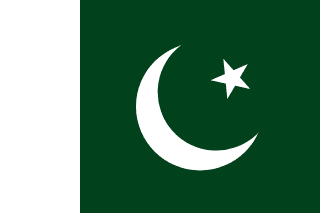 | Pakistan | Pakistan’s flag (11 August 1947) has a dark‑green field with a white hoist stripe, a white crescent, and a five‑pointed star. Green represents Islam and the Muslim majority; the white stripe minorities and peace; the crescent progress; the star light and knowledge. Proportions are 2:3 with specified geometries and shades. Rules govern precedence, half‑masting, respectful handling, and dignified retirement. Read more |
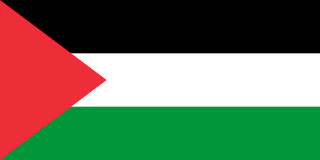 | Palestine | The flag of Palestine is the Pan‑Arab tricolour—three equal horizontal bands of black, white, and green—charged with a red hoist triangle. It descends from the 1916 Arab Revolt flag and appeared in Palestinian nationalist use during the British Mandate. The Palestine Liberation Organization (PLO) adopted it in 1964; the 1988 Palestinian Declaration of Independence reaffirmed it as the state flag. The Palestinian Authority and State of Palestine use the banner in domestic institutions and abroad; since 2015 it has been raised at the UN as a non‑member observer state’s flag. A common 1:2 ratio is used; construction sheets specify the triangle’s apex to the flag’s centre line. Official guidance and practice govern respectful handling, half‑masting in mourning, precedence with foreign flags, and dignified retirement of worn banners. Read more |
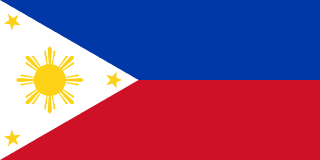 | Philippines | The Philippines flag (first raised 12 June 1898) has blue over red horizontal bands and a white hoist triangle bearing a golden sun with eight rays and three stars. Blue denotes peace, truth, justice; red patriotism and valor; the triangle equality/Katipunan ideals; the sun independence and the people; stars the three main island groups. The flag inverts in wartime (red up). Proportion is 1:2 with codified colours and geometry; the 1998 Flag and Heraldic Code governs protocol. Read more |
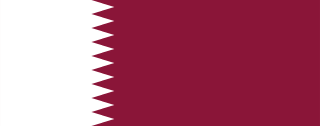 | Qatar | Qatar’s flag is maroon with a broad white hoist band separated by a serrated line of nine points. The serration commemorates Qatar joining as the ninth member of the ‘reconciled emirates’ after treaty arrangements; maroon reflects historic dyeing traditions and heraldic usage; white denotes peace. The current shade and geometry were standardised in the twentieth century and entrenched by law. Ratio is commonly 11:28, producing a long, easily recognised fly. Statutes govern respectful display, half‑masting, maritime use, commercial depiction, and penalties for misuse. Read more |
 | Saudi Arabia | Saudi Arabia’s flag is a green field charged with the white shahada (Islamic declaration of faith) above a horizontal sword pointing toward the hoist. Rooted in banners used by the House of Saud since the 18th century, the design was consolidated with the 1932 unification and refined in 1938 and later specifications. Green symbolises Islam; the sword denotes justice and state authority. Because it bears sacred text, the flag is never flown at half‑mast, nor used on clothing or profane items. Geometry, script (Thuluth), colour references, and respectful protocol are codified; misuse is punishable by law. Read more |
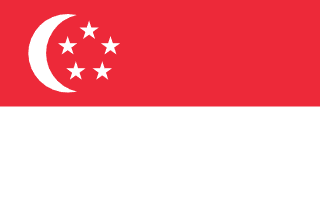 | Singapore | Singapore’s flag (3 December 1959) is a red over white bicolour with a white crescent and five white stars in a circle at the hoist. Red denotes universal brotherhood; white pervading virtue; the crescent a young nation; the stars the ideals of democracy, peace, progress, justice, and equality. Ratio 2:3; strict law governs construction, respectful use, and half‑masting. Read more |
 | South Korea | South Korea’s Taegeukgi (reaffirmed 1948; origins 1883) places a red‑blue Taegeuk at the center of a white field with four black I Ching trigrams (geon, gon, gam, ri) in the corners. White signifies purity and peace; the Taegeuk cosmic balance; the trigrams heaven, earth, water, fire. Proportions (2:3), color standards, and trigram placements are codified; protocol governs etiquette and half‑masting. Suppressed under Japanese rule, the flag became a symbol of resistance and later of the Republic. Read more |
 | Sri Lanka | Sri Lanka’s flag shows a golden lion holding a sword on a maroon panel with a gold border and four bo leaves, plus green and orange vertical stripes at the hoist. Adopted in 1948 and revised in 1951 and 1972, it symbolises Sinhalese heritage (lion), Buddhist virtues (bo leaves), and inclusion of minorities (orange and green). Ratio 1:2; protocol and penalties are codified. Read more |
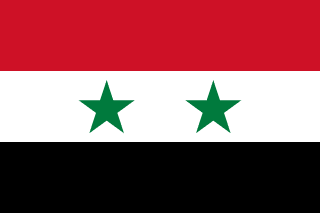 | Syria | Syria’s current flag (red‑white‑black horizontal tricolour with two green stars) was re‑adopted in 1980, restoring the 1958–1961 UAR motif. Pan‑Arab colours denote Arab unity and liberation; the green stars historically represented Egypt and Syria in the UAR, later read as unity and socialism. Laws fix a 2:3 ratio, star geometry, colour specs, and protocol (precedence, half‑masting, dignified retirement). Competing flags have been used by opposition groups. Read more |
 | Taiwan | Taiwan’s flag (the flag of the Republic of China) is a red field with a blue canton bearing a white sun of twelve rays. First adopted by the ROC in 1928, it has been used in Taiwan since 1945 and continuously after 1949. Red signifies the land and the people’s sacrifice; blue the “Blue Sky” of liberty; white the purity of “White Sun” and equality—together known as “Blue Sky, White Sun, and a Wholly Red Earth.” Laws define a 2:3 ratio, canton geometry, sun construction, colour standards, respectful protocol, half‑masting, maritime use, and dignified retirement. Read more |
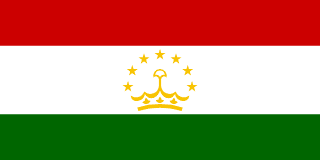 | Tajikistan | Tajikistan’s flag (24 November 1992) is a horizontal tricolour of red, white, and green with a golden crown and seven stars centred. Red symbolises unity and sacrifice; white snow and cotton; green nature and agriculture. The crown denotes sovereignty; seven stars auspiciousness. Laws prescribe a 1:2 ratio, emblem geometry, colour specs, protocol, half‑masting, and dignified retirement. Read more |
 | Thailand | Thailand’s “Trairanga” (adopted September 1917) is a five‑stripe red‑white‑blue‑white‑red tricolour, with the blue centre band double width. Red denotes the nation/people; white Buddhism/religion; blue the monarchy and, historically, solidarity with WWI Allies. Proportion is 2:3 with strict stripe ratios; law governs protocol, precedence, half‑masting, and dignified retirement. It replaced earlier elephant‑on‑red royal ensigns to modernise and internationalise Siam’s emblem. Read more |
 | Timor-Leste | Timor‑Leste’s flag (20 May 2002) is a red field with a yellow isosceles triangle at the hoist overlaid by a black triangle bearing a white five‑pointed star. Red signifies the struggle for liberation; yellow colonial traces; black past obscurantism; the white star peace and the guiding light of independence. Ratio 1:2; statutes codify triangle geometry, star size/placement, colours, protocol, half‑masting, and retirement. Read more |
 | Turkey | Turkey’s flag is a red field with a white crescent and five‑pointed star, codified by the Turkish Flag Law of 29 May 1936 based on late Ottoman precedents. The law fixes a 2:3 ratio, exact crescent radii/chords and star size/placement, and colour standards. Red denotes the republic’s resolve; the crescent and star express continuity with Ottoman and earlier Anatolian‑Islamic symbolism. Protocol governs precedence, half‑masting, illumination, maritime use, and dignified retirement. Read more |
 | Turkmenistan | Turkmenistan’s flag (24 January 1992; refined later) features a green field with a vertical red carpet‑gül stripe at the hoist, a white waxing crescent, and five stars. The carpet motifs represent major tribes; green and crescent denote Islam and heritage. Detailed laws fix a 2:3 ratio, gül sequence, stripe width, crescent/stellar geometry, colour references, and protocol; misuse is penalised. Read more |
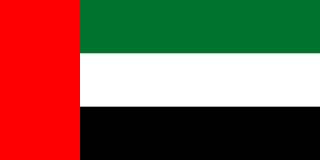 | United Arab Emirates | The UAE flag (adopted 2 December 1971) combines the Pan‑Arab colours: a vertical red hoist bar and horizontal green, white, and black stripes. Designed by Abdullah Mohammed Al Maainah through a national competition, it symbolises Arab unity, courage, prosperity, peace, and strength. Proportion is 1:2; statutes and circulars govern respectful display, precedence, half‑masting, illumination at night, and dignified retirement. Each emirate retains its historic banner for local use; the federal flag is paramount on national occasions. Read more |
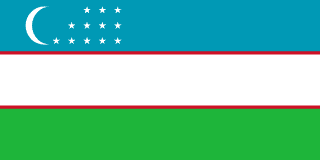 | Uzbekistan | Uzbekistan’s flag (18 November 1991) is a horizontal tricolour—blue, white, green—separated by thin red fimbriations, with a white crescent and twelve white stars at the hoist. Blue recalls water and sky; white peace and purity; green nature and renewal; red life and vitality. The crescent signifies independence and heritage; twelve stars order and aspiration. Law fixes a 1:2 ratio, precise star/crescent geometry, colour standards, and protocol for respectful display, half‑masting, and dignified retirement. Read more |
 | Vietnam | Vietnam’s flag is a red field bearing a large gold five‑pointed star at the center. First flown by the Viet Minh in 1945 and adopted nationally upon reunification in 1976, it symbolizes revolution (red) and the unity of workers, peasants, intellectuals, traders, and soldiers (gold star). Law fixes a 2:3 ratio, star geometry, and color standards; protocol governs precedence and half‑masting. Earlier dynastic and South Vietnamese flags were superseded after reunification. Read more |
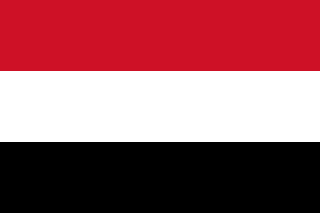 | Yemen | Yemen’s flag (22 May 1990) is a horizontal tricolour of red, white, and black adopted upon unification of North and South Yemen. The Pan‑Arab palette recalls the Arab Revolt; red denotes revolution and unity; white a bright future and peace; black the past and steadfastness. Law sets a 2:3 ratio, colour references, protocol for state buildings and missions, half‑masting orders, and dignified retirement. Earlier northern and southern ensigns were retired at unification. Read more |
China, Japan, South Korea, North Korea, Mongolia
Minimalist designs with deep cultural symbolism
India, Pakistan, Bangladesh, Sri Lanka, Nepal
Rich colors representing diverse religions and cultures
Indonesia, Thailand, Vietnam, Philippines, Malaysia
Tropical colors with colonial and independence influences
Kazakhstan, Uzbekistan, Turkmenistan, Kyrgyzstan
Nomadic heritage reflected in traditional patterns
Turkey, Iran, Iraq, Saudi Arabia, UAE
Islamic symbols and Pan-Arab color influences
Russia (Asian part), Siberian regions
Vast territories with European-influenced designs
Japan's flag, the Hinomaru, features a red circle representing the sun on a white background. It's one of the world's oldest flag designs, dating back over 1,000 years.
Nepal's flag is the only non-rectangular national flag in the world, featuring two triangular pennants that represent the Himalayas and the two major religions.
South Korea's flag features the yin-yang symbol (Taeguk) surrounded by four trigrams from the I Ching, representing universal elements and balance.
India's flag features the Ashoka Chakra, a 24-spoke wheel representing eternal law and righteousness in Buddhist and Hindu traditions.
Asia covers 30% of Earth's land area and contains 48+ countries, making it essential for global geography knowledge.
Asian flags represent some of the world's oldest civilizations and richest cultural traditions spanning thousands of years.
Many Asian countries are major economic powers. Knowing their flags is valuable for business and international relations.
Asian flags feature profound symbolism from ancient philosophies, religions, and cultural traditions.